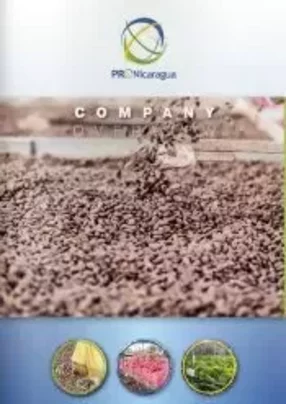Nicaragua has always been highlighted by the quality of its agricultural sector, as weather conditions and abundant water resources make the country ideal for producing a wide variety of crops instead. Thus, the cocoa industry of Nicaragua has established itself as the most dynamic in Central America, and also enjoys a favorable environment for the modernization and increased production and processing. Also, cocoa available in the country is the Trinitarian type, if properly fermented, is the preferred raw material for thin and dark chocolates.
Annually 4,000 metric tons of cocoa from approximately 8,000 hectares are produced and exported primarily to Central America and Europe. However, the country has more 350,000 cocoa hectares suitable for growing, mainly located in the North Atlantic Autonomous Region and the South Atlantic Autonomous Region, according to a study by the Ministry of Agriculture and Forestry (MAG ) done in 2010.
Since 2007, cocoa exports were driven by rising grain prices on the international market and increased domestic production. These have shown an annual compound growth rate of 24 percent in value and 22 percent in volume between 2007 and 2012, from U.S. $ 1.32 billion in 2007 to U.S. $ 3.93 million in 2012, to 900 metric tons in 2007 to 2.400 metric tons by the end of 2012. Currently, until July 2013, there have been U.S. $ 4.26 million and 1,890 metric tons in terms of exports of this product.
The competitive advantages that Nicaragua offers for investments in agribusiness are what have driven the growth of the cocoa industry in the country. First, Nicaragua has access to more than 1,500 million people worldwide since it has signed free trade agreements (FTA) with several other countries. Moreover, Nicaragua is the largest country in Central America in terms of territory and more than 50 percent are uncultivated, representing a large availability of land. The Government has also made it a priority to attract quality foreign direct investment and creating a more favorable environment for business in the country in recent year’s environment.
Most cocoa farmers in Nicaragua are considered small producers with average production areas of 1 hectare. However, from the year 2010, a large group of foreign and domestic companies have begun investing approximately 5,000 hectares of cocoa plantations in the South Atlantic Autonomous Region (RAAS), specifically in El Rama and New Guinea in the region Autonomous North Atlantic (RAAN) in the municipalities of Siuna, Bonanza and Rosita, and Rio San Juan. Additionally, some Nicaraguan companies began to invest in cocoa plantations and in total, according to their projections, are expected to arrive to cultivate more than 8,000 hectares in the next 10 years.
An example of success in the cocoa industry in Nicaragua is the case of Ritter Sport, internationally recognized company dedicated to the production and marketing of fine chocolates from around the world. The company first entered Nicaragua in 1991, buying and supporting the production of small cocoa farmers, due to their excellent quality. Beginning in 2011, the company decided to invest around U.S. $ 25 million in cocoa plantations of at least 3,500 hectares and in 2012 began to expand its operations and that Nicaragua had found the ideal conditions for the production, processing and export of cocoa.
Related articles:

